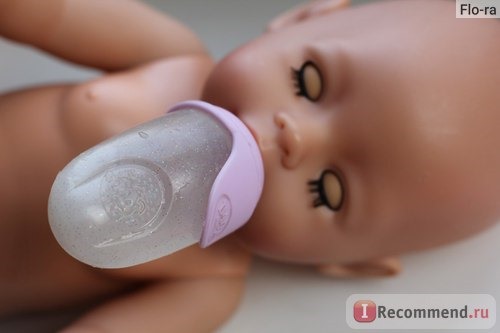How to perform heimlich maneuver on a child
When a Child Is Choking (Age 1 to 12 Years)
Young children often want to put things into their mouth. This includes toys and food. And it can include anything they find nearby, such as a pen cap or coin. Small objects can choke a child. This happens when the object slips into the child’s airway (trachea). A blocked airway can be very serious, even deadly. Choking can block the flow of air and cut off oxygen to the brain. This can cause permanent brain damage or death.
This sheet can help you prepare for a choking emergency. It will also help you take steps to prevent a child from choking.
What are choking hazards?
Any object small enough to enter a child's airway can block it. This includes:
Small food pieces, such as nuts, grapes, beans, popcorn, hotdog pieces, or food that hasn’t been chewed well
Small household objects, such as buttons, marbles, coins, balloons, or beads
Small toy parts
Button batteries, such as those used for watches, cameras, and small electronics
Signs of choking
The signs of choking can include:
Violent coughing
A high-pitched sound when breathing in
Being unable to cough, breathe, cry, or speak
Face that turns pale and blue-tinted
Clutching at his or her throat
Assessing the situation
The steps to take when a child is choking will vary in these situations:
If a child has trouble breathing, but can talk and has a strong cough
If a child has trouble breathing, but can’t talk or make sounds and is conscious
If a child stops breathing or is unconscious, and you are not alone
If a child stops breathing or is unconscious, and you are alone
The instructions for each situation are below.
If a child has trouble breathing, but can talk and has a strong cough:
Do NOT put your finger into the child’s mouth to remove the object. Your finger could push the object deeper into the child’s throat.
Call 911. This is because the airway can become fully blocked.
Encourage the child to cough until the object comes out. Don't do the Heimlich maneuver. The child's cough is better than the Heimlich maneuver.
Watch the child closely to make sure the object comes out and doesn’t shift to fully block the throat.
If a child has trouble breathing but can’t talk or make sounds and is conscious:
Do NOT put your finger into the child’s mouth to remove the object. Your finger could push the object deeper into the child’s throat.
Tell someone nearby to call 911.
Do the Heimlich maneuver (see instructions below).
Keep doing the Heimlich maneuver until the object is out of the throat.

Stop if the child becomes unconscious or stops breathing.
If a child stops breathing or is unconscious:
Tell someone nearby to call 911.
Lay the child down on his or her back on a hard, flat surface such as a table, floor, or the ground.
If you can’t see the object and the child has not started breathing, place your mouth over his or her mouth. Pinch the nose shut and puff 2 breaths into the mouth. Each breath should last 2 seconds.
Do the Heimlich maneuver with the child lying on his or her back. Kneel at her feet, place the heel of one hand in the middle of her body between the navel and ribs. Put one hand on top of the other and use gentle but firm pressure to give 6 to 10 rapid thrust upward and inward.
If the child has no pulse, this means his or her heart has stopped beating. Start CPR (see instructions below). Repeat CPR until emergency services arrives, or the child starts breathing.
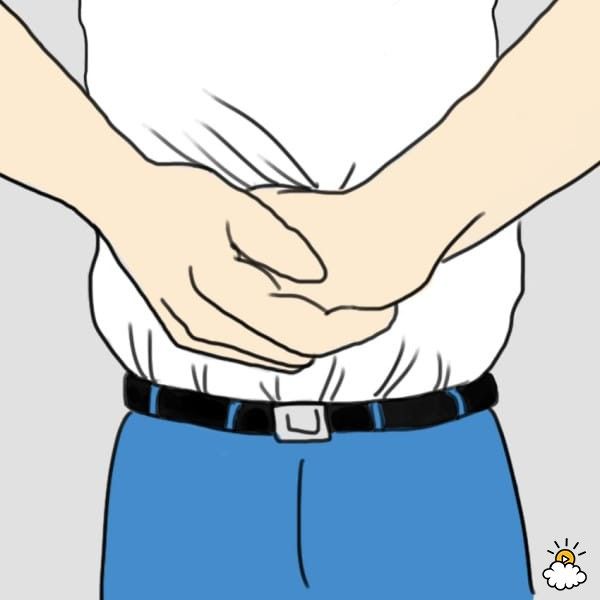
How to do the Heimlich maneuver
You may need to use this method when a child is choking:
With the child in the upright position, bend the child forward while holding the child with one hand at the waist.
With your free hand, give the child 5 back blows between the shoulder blades with the heel of your hand.
If the object is not dislodged, put both hands together making a fist at the child's abdomen.
Place your fist right above the child’s bellybutton.
Then use fast, short motions to thrust inward and upward giving 5 quick abdominal thrusts. Don’t lift the child off the floor while doing this.
Continue 5 sets of back blows followed by 5 abdominal thrusts until the objects is dislodged, the child can cough and breath, the child becomes unconscious, or help arrives.
How to do cardiopulmonary resuscitation (CPR)
You may also need to use this method if a choking child has no pulse (heartbeat) and is not breathing:
Use the heel of your hand to push down on the lower part of the child’s breast bone, just below the nipple line.
 Push in about 2 inches. Do this 30 times fast. This should take about 20 seconds. This is a rate of at least 100 compression per minute.
Push in about 2 inches. Do this 30 times fast. This should take about 20 seconds. This is a rate of at least 100 compression per minute.Give 2 rescue breaths. Gently lift the child’s chin up with one hand and tilt the head back. Place your mouth over his or her mouth, pinch the nose shut and puff 2 breaths into the child’s mouth. Each breath should last 1 second. Watch to see if the child’s chest rises.
If the chest does not rise, give 30 chest compressions. Look in the child's mouth for an object. Remove the object, being careful not to push it back into the throat. If you can't see an object, don't put your finger in the child's mouth.
If the child does not start breathing, continue cycles of 30 chest pushes followed by 2 quick breaths. Do this until breathing starts, help arrives, you become too exhausted to continue, or the scene becomes unsafe.
Help prevent a child from choking
Keep an eye on children as they eat or play.
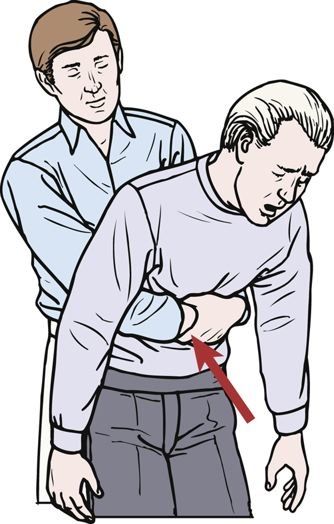
Keep problem foods and objects away from young children. This includes small foods and small household objects.
Don’t let young children play with toys with small parts.
Safety-proof your home by removing small objects that a child may reach.
Check for toys recalled for choking hazards on the Consumer Product Safety Commission website, www.cpsc.gov.
Heimlich Maneuver Toddler: First Aid Steps for Choking in Children
When a child is choking, it’s easy to panic. Their bodies are so small and seem so fragile that you may become reluctant to assist them because you are afraid of making the situation worse.
To save a life, it’s essential to act quickly to help them breathe again. One of the most successful procedures for removing an obstruction from a child’s airway is the Heimlich Maneuver. Today, we’re going to learn about what the Heimlich Maneuver is and how you can effectively perform it on a child without risking more damage.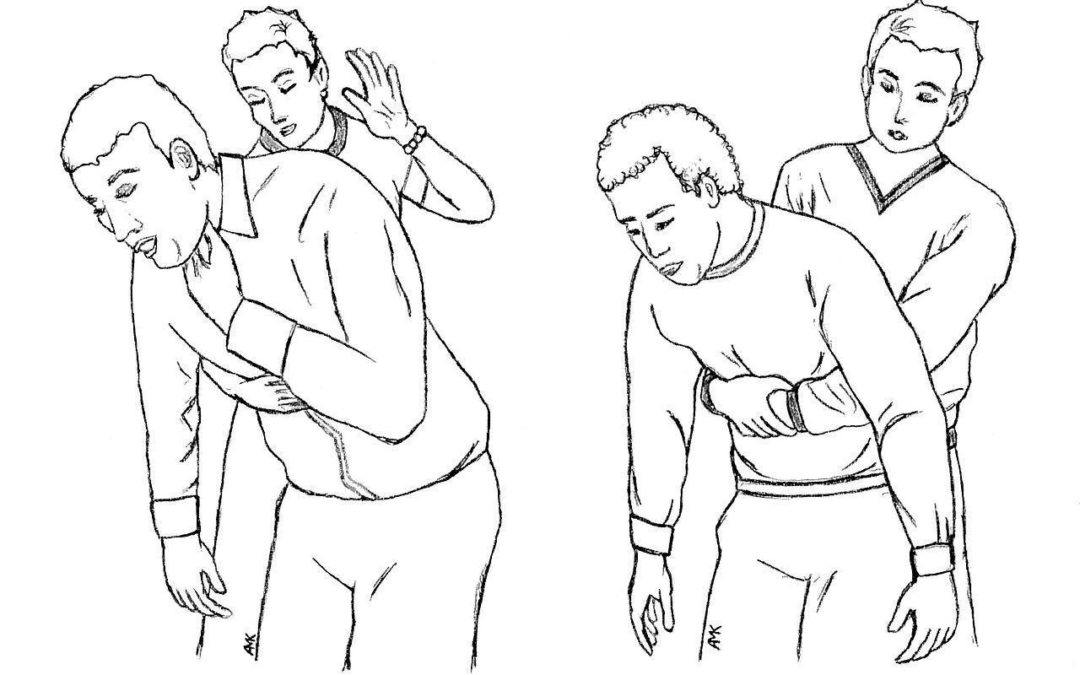
What is the Heimlich Maneuver?
The Heimlich Maneuver is a procedure used to treat upper airway obstructions by dislodging foreign objects. The term originated with Dr. Henry Heimlich, who first described the procedure in 1974.
Why is it important to learn the Heimlich Maneuver for children/toddlers?
If you have ever been around a child for an extended period of time, you know that they love to put things in their mouths – especially things that do not belong there. This can result in choking if these objects slip into the child’s upper airway, preventing them from breathing. The same can be said for food because kids do not always chew food properly before attempting to swallow.
When you learn how to perform the Heimlich Maneuver on a child, you can make sure that they can get past this silly stage of life and grow into a curious (yet cautious) adult in the future.
What are the signs of choking in a child?
Some people may not be sure whether or not the child they are supervising is choking. You need to act quickly before the item gets lodged in the airway even further so pay close attention to the following signs so you know when to intervene:
You need to act quickly before the item gets lodged in the airway even further so pay close attention to the following signs so you know when to intervene:
- Violent coughing. When a child coughs, it should pass quickly. If the child coughs for a long period of time and it gets more violent, this is a sign that they are struggling to clear their airway.
- Being unable to cough, speak, cry, or breathe. A child who is truly choking and in need of immediate assistance will not be able to speak, cry, breathe, or cough at all.
- A high-pitched sound while breathing in. This means that the child is struggling to breathe and their airway is severely restricted.
- A pale or blue-tinted face. When the body is deprived of oxygen, the skin pales and turns blue. This is a sign that the child has been choking for a while and the situation is critical.
- The child is clutching at their throat.
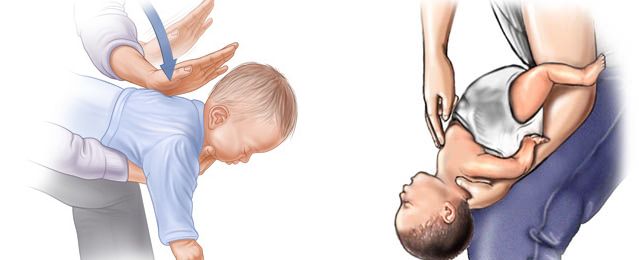 Children do not often understand how to clear their airway and they begin to panic and grab at their throats. Adults do this sometimes, too. It is a reflex response to choking.
Children do not often understand how to clear their airway and they begin to panic and grab at their throats. Adults do this sometimes, too. It is a reflex response to choking.
How do you perform the Heimlich Maneuver on a child?
After you determine that a child is choking and in need of the Heimlich Maneuver, follow the steps below to clear their airway.
- With the child in an upright position, bend them forward while supporting their waist with one hand.
- Give the child five back blows with your free hand. Be sure to give the blows directly between the shoulder blades with the heel of your hand.
- If this does not dislodge the object, put both hands together and make a fist at the child’s abdomen.
- Place the fist right above the child’s belly button.
- Use fast, quick motions thrusting inward and upward. Five abdominal thrusts should be sufficient. Note that you should not lift the child off of the floor while doing this.
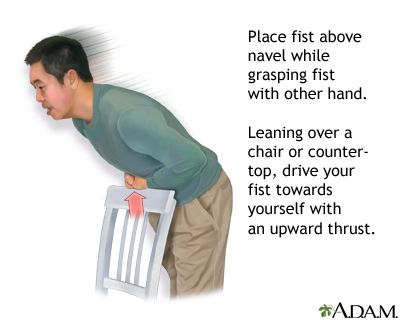
- If this does not dislodge the object, cycle between five back blows and five abdominal thrusts. If the child can breathe again, it’s time to stop. If they become unconscious or if help arrives, move on to a different method or let the professionals take over. Cardiopulmonary resuscitation may be necessary.
How do you prevent a child from choking?
While the Heimlich Maneuver is a useful tool when a child/toddler is choking, it should not be something that you have to perform often. To prevent choking in children in the first place and possibly save a child’s life, follow these simple guidelines.
Don’t let young children play with small objects.
Toy packaging has choking warnings for a reason. Small children should not be trusted to play with small objects. Too often they become curious and put these objects in their mouths. It is quite easy for these small items to get stuck in their trachea.
Be sure that all food is safe for the child to eat.

Small children choke on food items more often than anything. Their food should be soft and small enough to be easily chewed and swallowed without blocking the airway. Bananas, mashed potatoes, and other mushy foods are great for toddlers! Avoid giving them large pieces of meat, hard candy, or other harder foods until they are older as these foods can increase the risk of choking.
Supervise children while they eat or play.
Watching children is a full-time job and you should always supervise them while they eat and play. When you leave them to their own devices, young kids are likely to do risky things and get themselves into situations that they can’t easily get out of. If they do begin to choke and no one is around, you may not find them until it’s too late. It only takes six minutes without oxygen for the brain to begin to die. If the brain dies, there is no hope of the child ever regaining consciousness or living without the help of life support machines.
Any death is a tragedy but a child’s death hits even harder.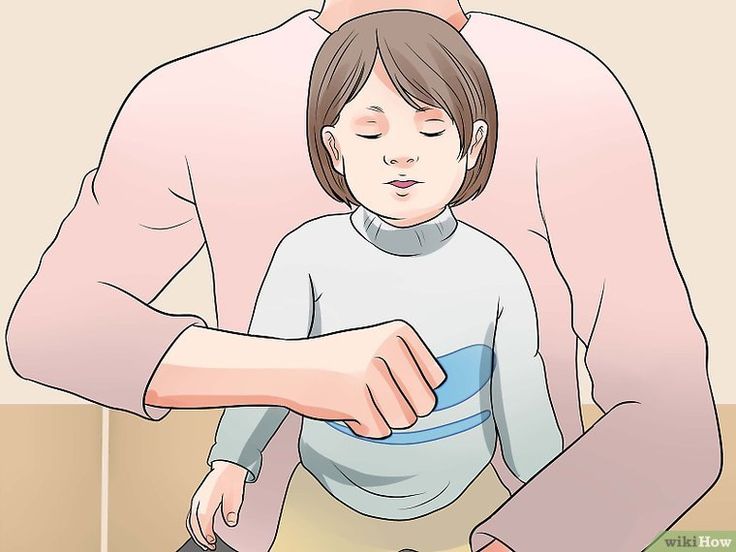 A little supervision goes a long way toward preventing it from ever coming to pass. If you need to use the Heimlich Maneuver on a child, remember to use just enough force to dislodge an object without hurting them. Children are a good deal more fragile than adults but anything you do to help more than hurt is important! Follow the Heimlich Maneuver guidelines carefully and you could save a life.
A little supervision goes a long way toward preventing it from ever coming to pass. If you need to use the Heimlich Maneuver on a child, remember to use just enough force to dislodge an object without hurting them. Children are a good deal more fragile than adults but anything you do to help more than hurt is important! Follow the Heimlich Maneuver guidelines carefully and you could save a life.
Heimlich maneuver and its modifications
Reading time: 3 min.
The Heimlich maneuver is a quick and effective first aid maneuver. It is this technique that is used if a person has suffocation and cannot breathe. Most often we are talking about the ingress of a foreign body into the upper respiratory tract. It can be food, and in young children, small toys.
Who invented the Heimlich maneuver?
The technique is named after the American physician Heinrich Heimlich, who is its author. By profession, Heimlich was a thoracic surgeon, so he knew the anatomy and physiology of the respiratory system very well.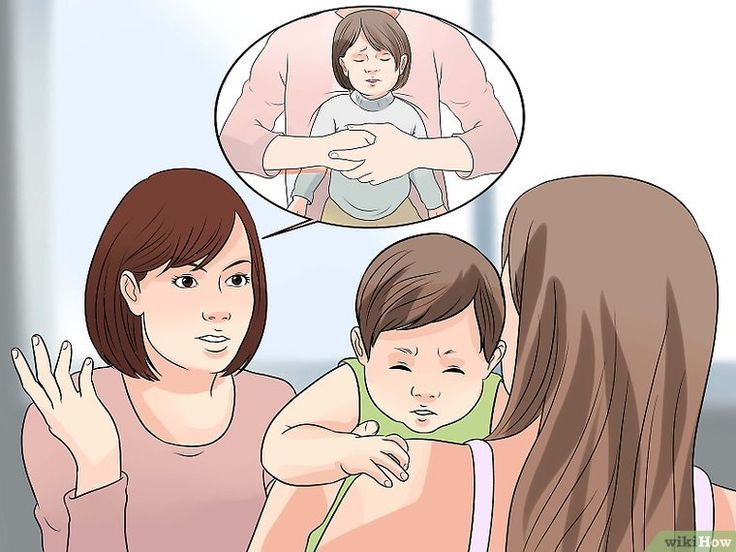 This is what allowed him to develop a working method of first aid for suffocation, using subdiaphragmatic shocks.
This is what allowed him to develop a working method of first aid for suffocation, using subdiaphragmatic shocks.
For the first time, an article with a detailed description of the method was published in 1974. The following year, the Association of American Emergency Physicians formally added admission to the Medical Standards Registry.
How to perform the Heimlich maneuver correctly?
To describe the method briefly, it looks like this: the one who provides assistance stands behind the patient, clenching one hand into a fist and placing it on his stomach. The other hand should be on top of the first, then you need to make a quick push up, pressing your fist into the victim's stomach. However, before proceeding with these actions, it is necessary to quickly assess the situation in order not to make serious mistakes:
- if a person begins to squeeze his throat with his hands, this is a sign that his life is in danger, since the airways are blocked by a foreign object;
- it is important to ask the person if he is choking.
 The victim will not be able to speak, but if he is suffocating, he will nod in response. Also, a person can neither cough nor breathe normally.
The victim will not be able to speak, but if he is suffocating, he will nod in response. Also, a person can neither cough nor breathe normally.
When performing the Heimlich maneuver, it is important to stand correctly, strictly behind the victim, and then grab him with both hands from behind under the ribs. One fist must be tightly clenched and correctly positioned. The place where he should be at the time of assistance is the point between the xiphoid process of the sternum and the navel. Then you should make several sharp pushes: first inward, and then up. In this case, both hands must be pulled back first, and then up. Movements are recommended to be performed sharply, clearly and quickly. The number of shocks is from six to ten.
Often the Heimlich method is alternated with blows in the area between the shoulder blades.
Free training consultation
Our consultants are always ready to tell you about all the details!
I agree to the processing of personal data Free call
What are the modifications of the Heimlich maneuver?
There are a few exceptions where modifications of the Heimlich maneuver are used. If a pregnant woman is in trouble, you need to cross both hands over her stomach where the base of the sternum is. It also happens that the victim has a large weight or height, so the girth cannot be made. In this case, you need to grab it under both armpits, throw it on yourself, having previously tilted your head to avoid a blow.
If a pregnant woman is in trouble, you need to cross both hands over her stomach where the base of the sternum is. It also happens that the victim has a large weight or height, so the girth cannot be made. In this case, you need to grab it under both armpits, throw it on yourself, having previously tilted your head to avoid a blow.
In children over the age of one year and younger students, a modification of the Heimlich technique, called "Pinocchio", is used. The child should be turned upside down, gently shaken and patted between the shoulder blades in order to remove the foreign body. There is another option: to sit the child with his back on his knees to the person providing assistance, and do the rest of the manipulations in the same way as for adults. However, this method can injure the child's liver and spleen, since at a young age the organs are not yet fully protected by the ribs. Usually a "full" Heimlich maneuver is suitable for children who are already attending school.
Who can perform the Heimlich maneuver?
Of course, even if a person is not a medical professional, he has heard about what the Heimlich maneuver is, especially if he is interested in prehospital care. In fact, any trained person can perform this manipulation, and you can get practical guidance from professionals by attending one of the emergency care seminars that the Academy of Medical Education (AMO) regularly holds.
The next seminar "Emergency and emergency medical care" will be held on June 20, 2020, in an online format. The program provides the most up-to-date and up-to-date information about the Heimlich maneuver and other first aid methods. Participants will receive both theoretical knowledge and practical guidance, on the basis of which they will be able to act correctly in the future in complex and emergency situations associated with emergency conditions of various etiologies. The educational program of the seminar was compiled by professional doctors with vast experience in practical work.
More detailed information about the seminar, its program and conditions of participation is available on the official website of the Academy of Medical Education.
Free training consultation
Our consultants are always ready to tell you about all the details!
I agree to the processing of personal data Free call
Like the material?
Your mail
I agree with the privacy policy
Don't forget to subscribe to our Yandex.Zen!
Heimlich maneuver and its modifications
Construction093
The Heimlich method is used for choking when a person needs immediate help. Usually in this state, the complexion of the victim becomes blue-red, as they say, cyanotic. The person grabs his throat and is unable to speak or inhale air. In such situations, it is very important to know the Heimlich method well. You can also help yourself in this way.
Contents
Steps
-
1
Check that the child is breathing.
If the baby turns blue or frantically flaps his arms without making a sound, quickly check his chest to see if it rises and falls and listen for breathing sounds.
- If you think the child is choking on something, try to pull the foreign object out with your finger, folding it into a hook. Do this on the condition that you see this object in the child's throat!
- It will not be superfluous to check the baby's pulse as well.

- If the child is unconscious, remove any visible objects from the mouth and begin CPR (cardiopulmonary resuscitation) until an ambulance arrives. Be aware that there may be resistance to air filling at first until the stuck object is removed.
-
2
Call emergency medical services. It is advisable to have someone else do this while you begin clearing the child's blocked airways.
-
3
Get ready for a pat on the back.
Lay the conscious child face down on your knee to pat him on the back. Hold the child firmly in this position (face down) and support his head. The baby should rest firmly on your arm with his chest; you can hold it with your hip.
- Then interlock the fingers of one hand together, forming a sort of paddle, and gently pat on the back, right between the child's shoulder blades. The blows should not be so strong that they could injure the child.
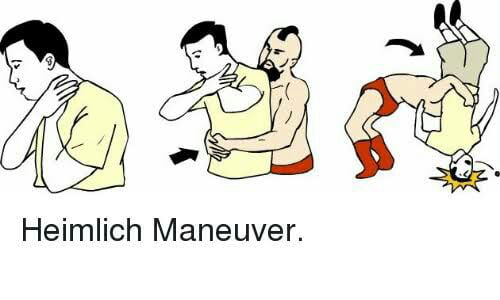
- Check mouth for foreign object. If you find one, remove it immediately.
- Then interlock the fingers of one hand together, forming a sort of paddle, and gently pat on the back, right between the child's shoulder blades. The blows should not be so strong that they could injure the child.
-
4
Press down on your chest.
If the child is coughing and crying, this is a good sign that he is breathing. If the child does not cry after performing the previous steps and the object could not be coughed up, then a pat on the back did not help. In this case, you need to perform pressure on the chest.
- Lay the child face up on your knees with the head lower than the body.
- Place three fingers directly on the center of the baby's chest (on the sternum, just below the nipple line). The middle finger should be right in the middle of the chest, on top.
- With your fingers in position, lift your middle finger and, using only your remaining fingers, apply firm pressure 5 times.
- Check the mouth again and remove the visible object.
-
5
Check again if the child is breathing.
 If not, alternate between back pats and chest compressions as above until the ambulance arrives.
If not, alternate between back pats and chest compressions as above until the ambulance arrives.
General description of the Heimlich method
What to do if someone near you chokes? First of all, don't panic. Do the following:
- If the choking person is conscious and on his feet, stand behind him.
- Grab the casualty with both hands.
- Squeeze one of the hands into a fist and press the thumb of the fist on the victim's abdomen between the navel and ribs. This region of the abdomen is called the epigastric region.
- Place the palm of the other hand on top of the fist and press it into the stomach with a pushing upward movement. When performing this movement, make sure that your arms are bent at the elbows, but at the same time the chest of the victim is not squeezed.
- We repeat the application of the Heimlich method until the airways of the choked person are completely freed.
It is important to remember that patting the casualty on the back can make the situation worse. An object that a person has choked on can pass through the airways below from claps on the back. A sign that the Heimlich method has worked is that the person can breathe on their own and their complexion has returned to normal.
An object that a person has choked on can pass through the airways below from claps on the back. A sign that the Heimlich method has worked is that the person can breathe on their own and their complexion has returned to normal.
When to perform the Heimlich maneuver
This first aid method is not performed on children under one year of age. Indications for its use in airway blockage include the following:
- inability to cough or speak,
- blue or violet complexion due to lack of oxygen,
- mild cough and labored breathing,
- all of the above with subsequent loss of consciousness.
Every year, a huge number of people, including tens of thousands of infants and older children, end up in hospital emergency departments with strangulation incidents. More than 80 percent of them are children aged four and under. Death from airway obstruction and related injuries is particularly common in children under four years of age due to their anatomy (small airways), natural curiosity, propensity to put things in their mouths, and poor chewing skills. In young children, choking usually results from inhaling small objects (such as coins or small toys and their parts) that they put into their mouths.
In young children, choking usually results from inhaling small objects (such as coins or small toys and their parts) that they put into their mouths.
First aid for partial suffocation
- Do not knock the person on the back
- Try to calm the victim
- Tell him that leaning forward will make breathing easier
- Watch his breathing and cough carefully. The most effective cough is sharp and violent. At the same time, breathing should not be deep, this helps to push the object inside
- If the person remains in this condition for a long time, call an ambulance
- Don't leave a person alone
It is important to remember that partial strangulation does not involve hitting the person on the back or using the Heimlich hold (some translations call it the “Heimlich hold” or “Heimlich hold”). You risk dislodging the foreign body and contributing to suffocation. In addition, when hitting the back, all the air is knocked out of the lungs of a person, and he can neither inhale nor exhale.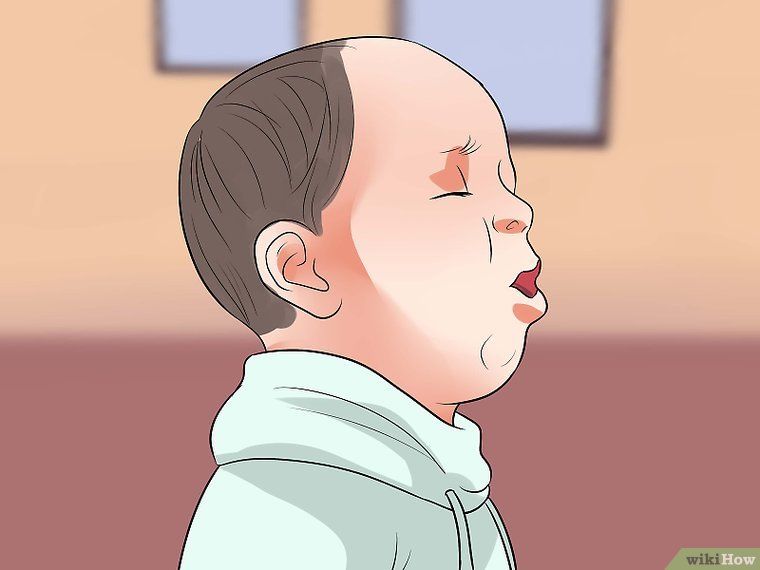
Tips
- Stay calm. Only by remaining calm, you can effectively help the child.
- Have someone else call your country's emergency number (e.g. US 911, Australia 000, UK 999, Russia 112) so that you can clear the child's blocked airway at this time . If no one is around, then call as soon as you see that the child is choking. You can remain on the speakerphone while clearing the baby's airways so you can talk and continue to help at the same time.
- Continue with airway clearance movements until emergency help arrives. Do not give up.
This page has been viewed 9162 times.
Risks and consequences
Incorrectly applied Heimlich technique can break bones or damage internal organs. The person performing it should never attempt to reach the stuck object with their hands. This will likely push it further down the windpipe. Dysphagia (difficulty swallowing) and obstructive pulmonary edema (accumulation of fluid in the lungs) may occur after taking Heimlich.






